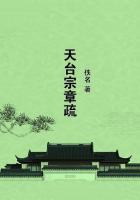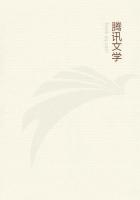Faithful to the plant recognized as yielding good results, the Anthidium arrives and resumes her gleaning on the edges of the parts denuded by earlier harvests. Her mandibles scrape away and pass the tiny fluffs, one by one, to the hind-legs, which hold the pellet pressed against the chest, mix with it the rapidly-increasing store of down and make the whole into a little ball. When this is the size of a pea, it goes back into the mandibles; and the insect flies off, with its bale of cotton in its mouth. If we have the patience to wait, we shall see it return to the same point, at intervals of a few minutes, so long as the bag is not made. The foraging for provisions will suspend the collecting of cotton; then, next day or the day after, the scraping will be resumed on the same stalk, on the same leaf, if the fleece be not exhausted. The owner of a rich crop appears to keep to it until the closing-plug calls for coarser materials; and even then this plug is often manufactured with the same fine flock as the cells.
After ascertaining the diversity of cotton-fields among our native plants, I naturally had to enquire whether the Cotton-bee would also put up with exotic plants, unknown to her race; whether the insect would show any hesitation in the presence of woolly plants offered for the first time to the rakes of her mandibles. The common clary and the Babylonian centaury, with which I have stocked the harmas, shall be the harvest-fields; the reaper shall be the Diadem Anthidium, the inmate of my reeds.
The common clary, or toute-bonne, forms part, I know, of our French flora to-day; but it is an acclimatized foreigner. They say that a gallant crusader, returning from Palestine with his share of glory and bruises, brought back the toute-bonne from the Levant to help him cure his rheumatism and dress his wounds. From the lordly manor, the plant propagated itself in all directions, while remaining faithful to the walls under whose shelter the noble dames of yore used to grow it for their unguents. To this day, feudal ruins are its favourite resorts. Crusaders and manors disappeared; the plant remained. In this case, the origin of the clary, whether historical or legendary, is of secondary importance. Even if it were of spontaneous growth in certain parts of France, the toute-bonne is undoubtedly a stranger in the Vaucluse district. Only once in the course of my long botanizing-expeditions across the department have I come upon this plant. It was at Caromb, in some ruins, nearly thirty years ago. I took a cutting of it; and since then the crusaders' sage has accompanied me on all my peregrinations. My present hermitage possesses several tufts of it: but, outside the enclosure, except at the foot of the walls, it would be impossible to find one. We have, therefore, a plant that is new to the country for many miles around, a cotton-field which the Serignan Cotton-bees had never utilized before I came and sowed it.
Nor had they ever made use of the Babylonian centaury, which I was the first to introduce in order to cover my ungrateful stony soil with some little vegetation. They had never seen anything like the colossal centaury imported from the region of the Euphrates. Nothing in the local flora, not even the cotton-thistle, had prepared them for this stalk as thick as a child's wrist, crowned at a height of nine feet with a multitude of yellow balls, nor for those great leaves spreading over the ground in an enormous rosette. What will they do in the presence of such a find? They will take possession of it with no more hesitation than if it were the humble St. Barnaby's thistle, the usual purveyor.
In fact, I place a few stalks of clary and Babylonian centaury, duly dried, near the reed-hives. The Diadem Anthidium is not long in discovering the rich harvest. Straight away the wool is recognized as being of excellent quality, so much so that, during the three or four weeks of nest-building, I can daily witness the gleaning, now on the clary, now on the centaury. Nevertheless the Babylonian plant appears to be preferred, no doubt because of its whiter, finer and more plentiful down. I keep a watchful eye on the scraping of the mandibles and the work of the legs as they prepare the pellet; and Isee nothing that differs from the operations of the insect when gleaning on the globe-thistle and the St. Barnaby's thistle. The plant from the Euphrates and the plant from Palestine are treated like those of the district.
Thus we find what the Leaf-cutters taught us proved, in another way, by the cotton-gatherers. In the local flora, the insect has no precise domain; it reaps its harvest readily now from one species, now from another, provided that it find the materials for its manufactures. The exotic plant is accepted quite as easily as that of indigenous growth. Lastly, the change from one plant to another, from the common to the rare, from the habitual to the exceptional, from the known to the unknown, is made suddenly, without gradual initiations. There is no novitiate, no training by habit in the choice of the materials for the nest. The insect's industry, variable in its details by sudden, individual and non-transmissible innovations, gives the lie to the two great factors of evolution:
time and heredity.















